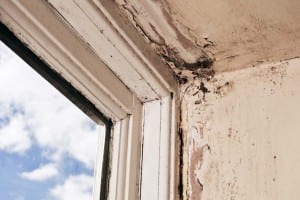 You may think that your home is safe from the perils of mould growth – however sadly it is a common problem and can occur in all sorts of houses, whether new or old. It’s important to be aware of how to prevent mould growth in order to protect yourself and your family from the issues that can arise from it and the potential health risks that it can pose.
You may think that your home is safe from the perils of mould growth – however sadly it is a common problem and can occur in all sorts of houses, whether new or old. It’s important to be aware of how to prevent mould growth in order to protect yourself and your family from the issues that can arise from it and the potential health risks that it can pose.
Where Does Mould Grow?
Mould grows on all sorts of organic materials including paper, leather and dirt. It’s usually found in places that are warm and moist so you’ll need to be especially careful in rooms such as bathrooms or if you home is on a lower ground. Basement areas are particularly susceptible to mould growth as they can easily take in the damp from outside.
Health Risks of Mould
One of the main reasons you will want to prevent mould growth in your home is due to the health risks that it can pose. If you or your family have allergies or asthma, mould growth can aggravate this when the spores are inhaled into the lungs.
Tips to Preventing Mould Growth In Your Home:
Be Alert
You can often spot mould growth simply by using your senses – if there’s a musty smell it could be a sign of growth. Equally, there are often coloured markings and watermarks on ceilings and walls. Always keep an eye out.
Use Dehumidifiers
Humidity indoors should be between 30% and 60%. If levels rise above this, you should monitor them carefully with a meter available to buy from any local hardware shop. If humidity levels are consistently high, it’s worth using dehumidifiers in your home to avoid damp issues developing – these do not need to be on all the time but should be used for a set time daily for maximum efficiency.
Keep Things Dry
Mould grows incredibly quickly. It often develops after only 2 days if given the correct conditions – this can be anything from letting condensation develop to leaving a wet towel on the floor. Always try to keep things dry and do not allow materials to fester.
Clean and Disinfect
Always disinfect surfaces if you have washed or cleaned them. Whilst you can use a spray to do this, you’ll then need to try the surface to ensure it’s not left moist. One of the best options is a vapour steam cleaner which ensures that there is no moisture left.
Ventilate
You need to make sure there is good air flow within your home. If you’re cooking or having a shower, always open a window or ensure that you turn on a well-functioning extractor fan. Also be aware that appliances such as tumbler driers can produce moisture and should always be vented to the outside.

The Right Materials
There are a huge number of mould resistant products now available on the market. For new build homes, it could be worth your while to use things such as mould resistant dry wall or Sheetrock and there are even mould inhibitors for paints. If you are re-doing a traditional home, always make sure you use these sorts of products in areas such as bathrooms or laundry rooms.
Image source: pickmydehumidifier.com
Look Outside
The way that your home is designed is incredibly important however perhaps even more so is the way that it sits compared to the outside space.
The ground surrounding your home should ideally slope away from the foundation to avoid water collecting there. You’ll also need to make sure that roof gutters are kept clean and repaired regularly.
Have you spotted signs of mould in your home but not sure the next course of action? Get in touch with one of our building inspection professionals.





